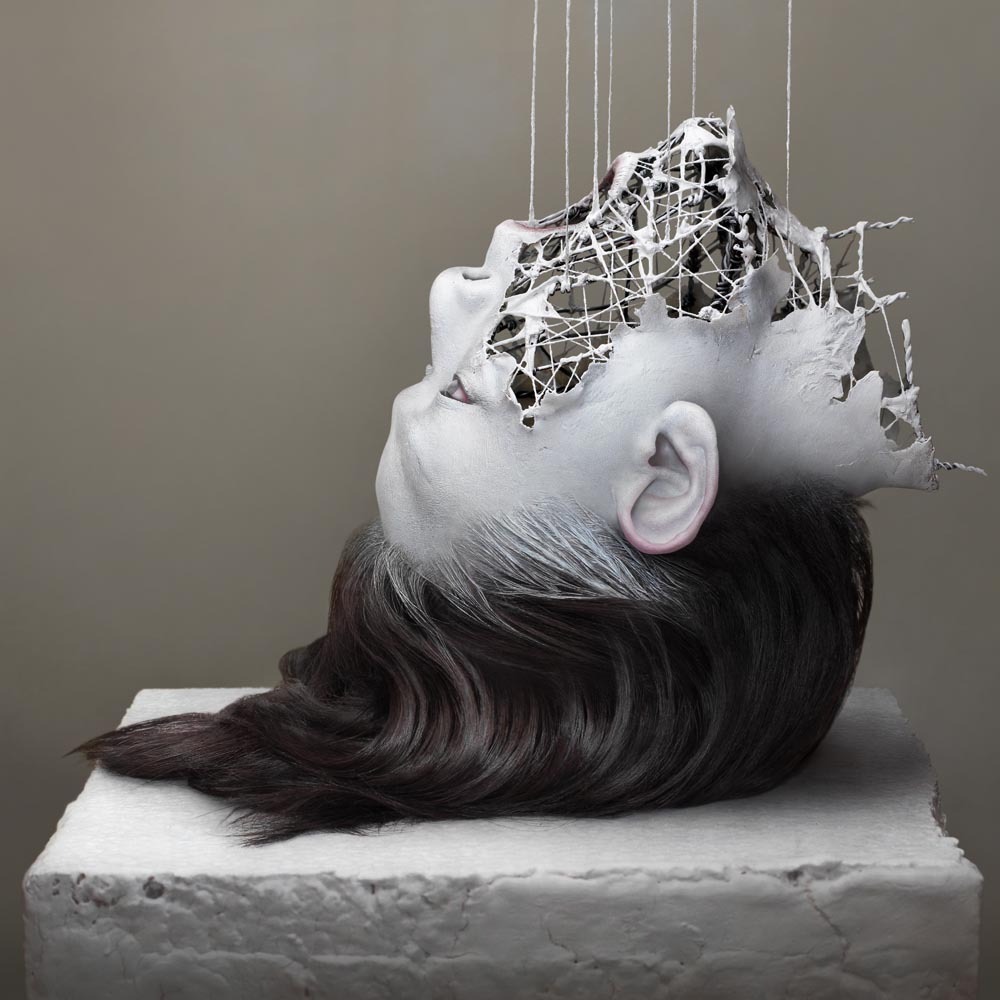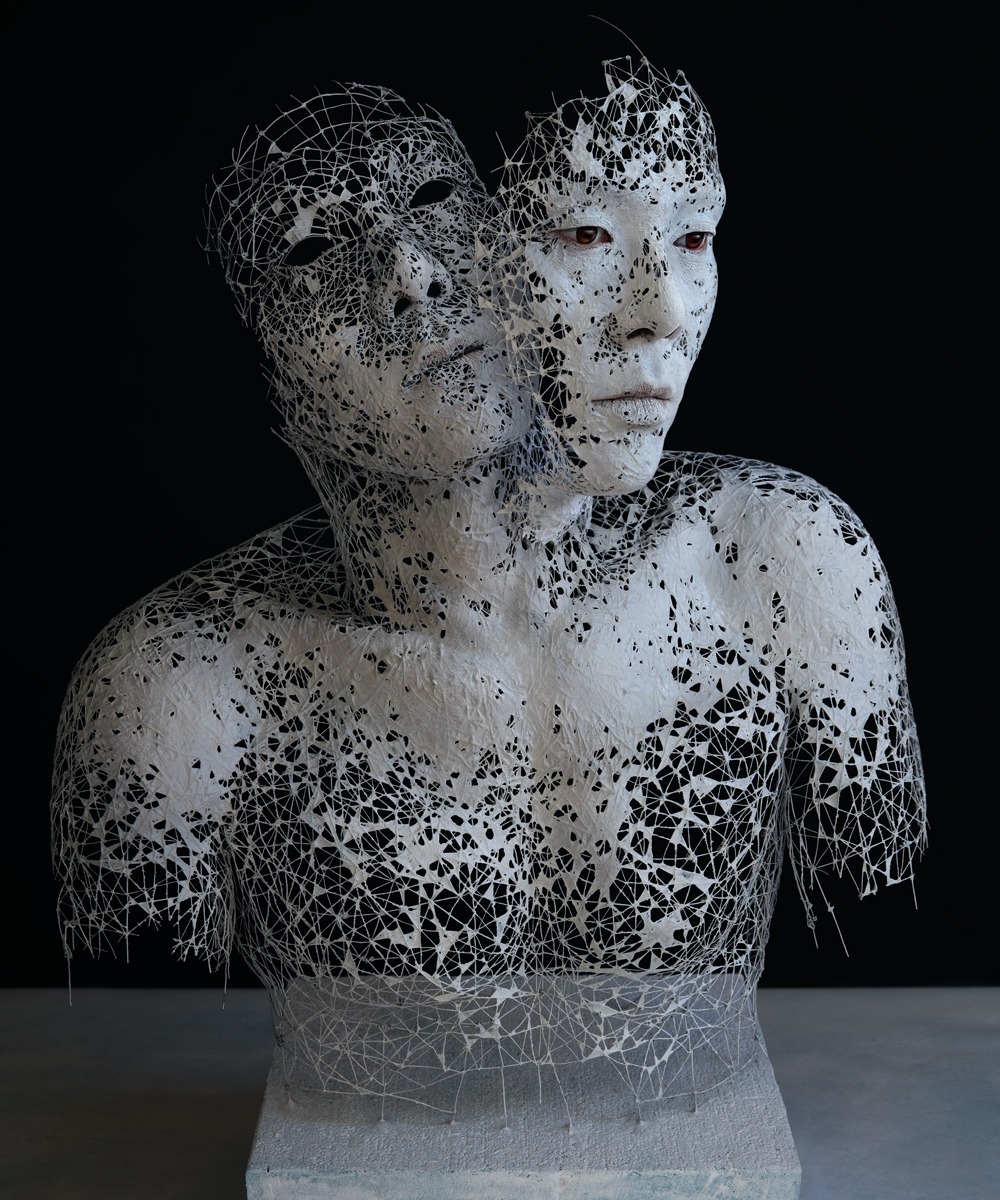Yuichi Ikehata
The photography of Yuichi Ikehata is not what one would typically imagine when they hear an artist’s choice of medium is “photography.” He uses photography deconstruct and rebuild images, often greyscale or with very little color, in a way that shows the haunting decay of the human condition. An interview with Juilet Magazine, Ikehata states that his process involves the “reconstruction of the three-dimensional subject through digital manipulation, thus developing a series of 2D photographs: sculptures to be photographed and then adding parts of the body such as the skin and eyes.” The artist describes the process of his series titled “Fragment of LTM” (or, “Fragment of Long Term Memory) saying that he starts by taking photos of himself, then creates sculptures with weaving cables and wires and combines the two. The results are poignant and eerie. Ikehata says that he wants to “explore the boundary between reality and fiction” and depict the theme of “long term anxiety.”
In the below piece, Ikehata creates the image of a person’s head suspended in the air, hair flowing and resting on a marble platform. The skin of the person seems to either be hanging from threads above or is being absorbed into something else that is above them. This exposes a wiring web of an almost exoskeleton looking base. Ikehata says in his interview, “I believe I cannot completely distinguish reality and unreality from physical existence. I repeat that we must not differentiate them… In this sense, not only the interest of an individual is reflected, but also the social realities that generally be communicated.”
Ikehata repeats in his interview that he does not want to limit the viewer’s perception of his art by placing a single meaning to his himself. He truly toes the boundary between real and unreal in his works. By depicting subjects that are familiar to every human being but presenting them in such a state of eerie decay, Ikehata highlights the real fragility of humans, and the uncertainty of our future. There is a humanoid aspect to it as well, which I think also touches on human’s dependence on (and perhaps even decay) technology.
Additionally, it’s important to note that Ikehata is creating art at a time in Japan where contemporary artists are starting to gain more recognition and gain more popularity. An article in Time Out magazine states that there is a lack of awareness for contemporary art in Japan due to the small size and relatively young age of the artists. Much of the contemporary Japanese art that is being popularized is that of artists like Takashi Murakami and Yoshimoto Nara, but these artists found the majority of their success abroad rather than in their home country. Jeffrey Ian Rosen, one of the co-founders of Gallery Misako & Rosen, comments that there is an increased number of independent galleries and art residencies that “take aim at nurturing young talents and present Japanese art to a broader public.” This is definitely possible, especially with artists like Ikehata who are synthesizing different mediums to create works of art that are both impactful and unique to audiences both at home and around the world.


Post a comment